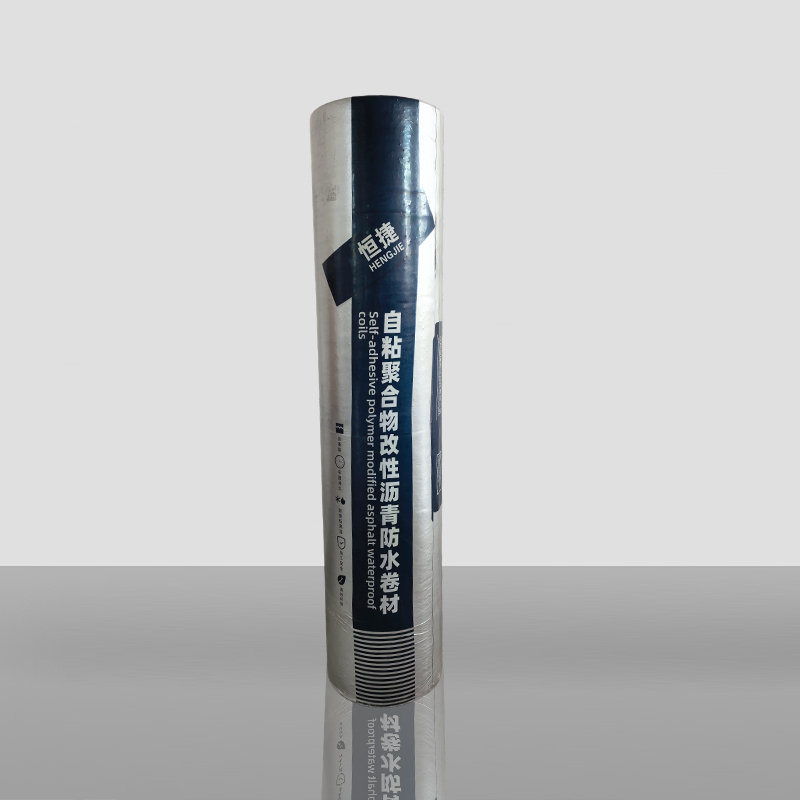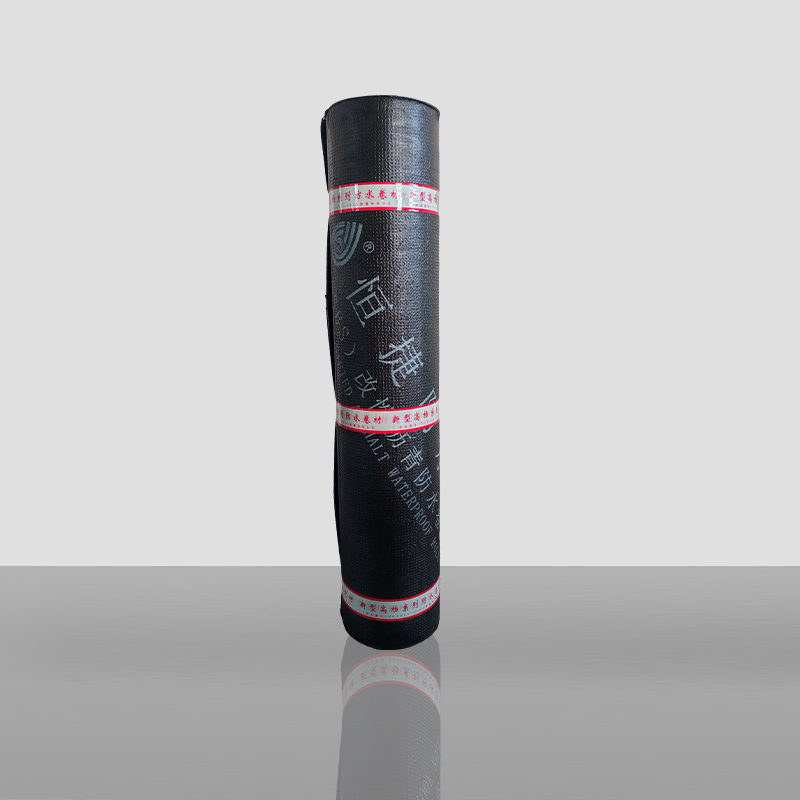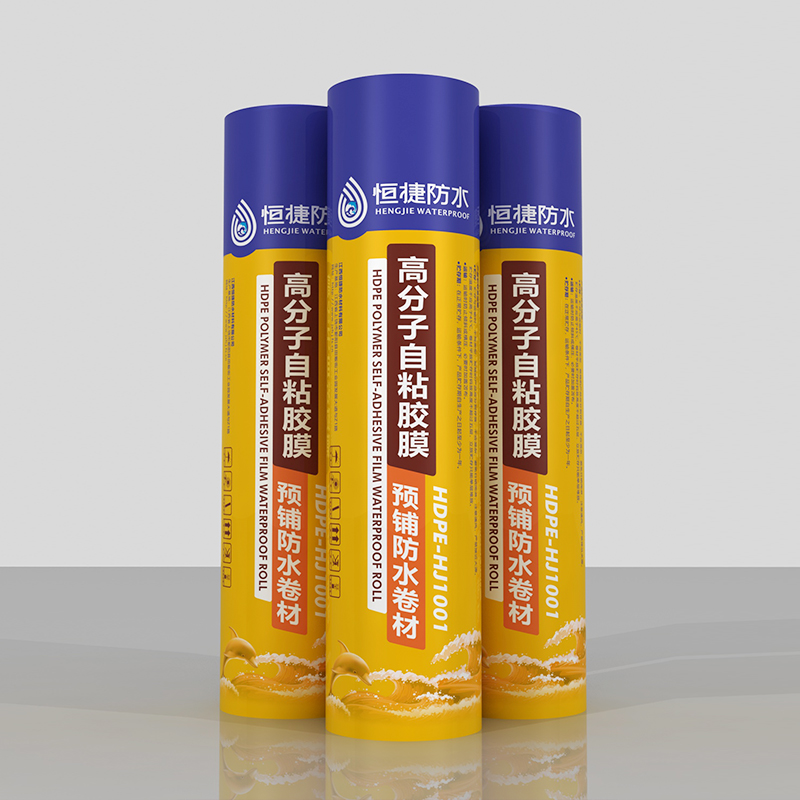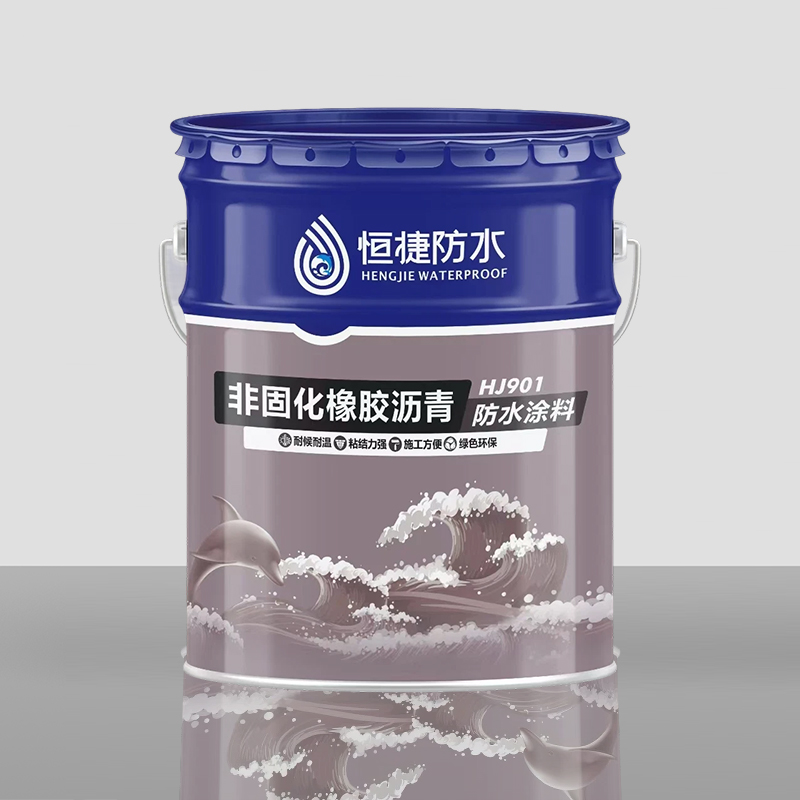How does modified asphalt waterproof membrane improve the waterproofing performance of buildings?
Release Time : 2025-07-30
Through its unique material composition and advanced production process, modified asphalt waterproof membrane significantly enhances the waterproofing performance of buildings. This highly effective waterproofing material not only effectively prevents water penetration but also maintains long-term stability and reliability in a variety of harsh environmental conditions, providing comprehensive protection for buildings.
First, the key to modified asphalt waterproof membrane lies in its base material. Polyester felt or fiberglass mat as the base material imparts excellent mechanical strength and dimensional stability to the membrane. Polyester felt has excellent tensile strength, allowing it to maintain integrity even with minor structural deformations, preventing cracks. Fiberglass mat, on the other hand, is renowned for its exceptional durability and aging resistance, maintaining its original physical properties even after long-term exposure to the elements, such as sunlight, wind, and rain. The use of these two base materials ensures that the waterproof membrane is resistant to damage after installation and effectively blocks water intrusion for a long time.
Second, the use of styrene-butadiene-styrene (SBS) thermoplastic elastomer as a modifier significantly enhances the asphalt's flexibility and low-temperature ductility. Traditional asphalt materials tend to become brittle in cold environments, leading to cracking and loss of waterproofing properties. However, SBS-modified asphalt possesses enhanced elasticity and plasticity, allowing it to remain flexible even in cold weather and adapt to the stresses of temperature fluctuations. Furthermore, the SBS modifier improves the asphalt's weather resistance, extending the lifespan of the waterproofing membrane, ensuring that the modified asphalt waterproof membrane performs exceptionally well in extreme climates.
Furthermore, petroleum asphalt, as a base material, plays a crucial role in the modification process. It not only provides excellent bonding properties, ensuring a tight bond between the membrane and the base layer, forming a continuous and seamless waterproof barrier, but also exhibits excellent self-healing properties. When minor damage or holes are encountered, petroleum asphalt's inherent fluidity fills the defective areas, restoring the integrity of the waterproofing membrane. This self-healing property is crucial for maintaining the long-term effectiveness of building waterproofing systems, particularly in construction environments where minor damage is difficult to completely avoid.
The choice of barrier material is also a key factor in enhancing waterproofing performance. Applications such as fine sand, mineral particles, or PE film, applied to the surface of the modified asphalt coating, serve a dual purpose. On the one hand, they effectively prevent adhesion between membranes and between membranes and construction tools, facilitating transportation and installation. On the other hand, these insulating materials enhance surface friction, reducing the risk of slippage and ensuring stability after installation. Furthermore, the insulating materials reflect some ultraviolet light, slowing the aging of asphalt and further extending the lifespan of the waterproofing membrane.
The construction process also plays a significant role in the ultimate performance of modified Asphalt waterproof membrane. Proper construction methods not only ensure good adhesion between the membrane and the substrate but also maximize the material's strengths. For example, before installation, the substrate must be thoroughly cleaned and leveled to ensure it is free of dust, oil, and other impurities to enhance adhesion. During construction, strict adherence to specifications and the use of appropriate heating temperatures and pressures ensures a thorough integration of the membrane and the substrate. Furthermore, appropriate overlap widths and sealing are essential for achieving a comprehensive waterproofing effect. A rigorous and meticulous construction process maximizes the waterproofing effectiveness of modified Asphalt waterproof membrane.
In addition to these technical advantages, modified Asphalt waterproof membrane also offers a wide range of applicability. Whether it's roofs, basements, or complex structures like bridges and tunnels, there's a suitable solution. For roofs, this membrane can withstand frequent temperature fluctuations and exposure to wind and sun, providing durable and reliable waterproofing. In basement applications, its superior compressive strength and moisture-proofing are particularly crucial. Different thicknesses and specifications are available to meet the specific needs of different locations, satisfying personalized design requirements.
Finally, with increasing environmental awareness and technological advancements, Modified Asphalt waterproof membrane will develop in a greener and more environmentally friendly direction. The development of new materials and improvements in production processes will further enhance product performance and sustainability. For example, formulas with low volatile organic compound (VOC) emissions are being developed to reduce environmental pollution during construction, while the use of renewable resources in production is being explored to lower the carbon footprint. These innovative initiatives not only contribute to improving the ecological environment but also create new development opportunities for the construction industry.
In summary, Modified Asphalt waterproof membrane comprehensively enhances the waterproofing performance of buildings through optimized base materials, the introduction of high-performance modifiers, the selection of appropriate insulation materials, and rigorous construction processes. It not only solves many of the problems associated with traditional waterproofing materials but also demonstrates exceptional durability and reliability in complex and ever-changing external environments. Whether for new construction or renovation, Modified Asphalt Waterproof Membrane is a trustworthy choice, providing solid waterproofing protection for all types of buildings. With the continuous advancement of technology, we have reason to believe that Modified Asphalt Waterproof Membrane will demonstrate its unique value in even more areas in the future, driving the entire industry to new heights.
First, the key to modified asphalt waterproof membrane lies in its base material. Polyester felt or fiberglass mat as the base material imparts excellent mechanical strength and dimensional stability to the membrane. Polyester felt has excellent tensile strength, allowing it to maintain integrity even with minor structural deformations, preventing cracks. Fiberglass mat, on the other hand, is renowned for its exceptional durability and aging resistance, maintaining its original physical properties even after long-term exposure to the elements, such as sunlight, wind, and rain. The use of these two base materials ensures that the waterproof membrane is resistant to damage after installation and effectively blocks water intrusion for a long time.
Second, the use of styrene-butadiene-styrene (SBS) thermoplastic elastomer as a modifier significantly enhances the asphalt's flexibility and low-temperature ductility. Traditional asphalt materials tend to become brittle in cold environments, leading to cracking and loss of waterproofing properties. However, SBS-modified asphalt possesses enhanced elasticity and plasticity, allowing it to remain flexible even in cold weather and adapt to the stresses of temperature fluctuations. Furthermore, the SBS modifier improves the asphalt's weather resistance, extending the lifespan of the waterproofing membrane, ensuring that the modified asphalt waterproof membrane performs exceptionally well in extreme climates.
Furthermore, petroleum asphalt, as a base material, plays a crucial role in the modification process. It not only provides excellent bonding properties, ensuring a tight bond between the membrane and the base layer, forming a continuous and seamless waterproof barrier, but also exhibits excellent self-healing properties. When minor damage or holes are encountered, petroleum asphalt's inherent fluidity fills the defective areas, restoring the integrity of the waterproofing membrane. This self-healing property is crucial for maintaining the long-term effectiveness of building waterproofing systems, particularly in construction environments where minor damage is difficult to completely avoid.
The choice of barrier material is also a key factor in enhancing waterproofing performance. Applications such as fine sand, mineral particles, or PE film, applied to the surface of the modified asphalt coating, serve a dual purpose. On the one hand, they effectively prevent adhesion between membranes and between membranes and construction tools, facilitating transportation and installation. On the other hand, these insulating materials enhance surface friction, reducing the risk of slippage and ensuring stability after installation. Furthermore, the insulating materials reflect some ultraviolet light, slowing the aging of asphalt and further extending the lifespan of the waterproofing membrane.
The construction process also plays a significant role in the ultimate performance of modified Asphalt waterproof membrane. Proper construction methods not only ensure good adhesion between the membrane and the substrate but also maximize the material's strengths. For example, before installation, the substrate must be thoroughly cleaned and leveled to ensure it is free of dust, oil, and other impurities to enhance adhesion. During construction, strict adherence to specifications and the use of appropriate heating temperatures and pressures ensures a thorough integration of the membrane and the substrate. Furthermore, appropriate overlap widths and sealing are essential for achieving a comprehensive waterproofing effect. A rigorous and meticulous construction process maximizes the waterproofing effectiveness of modified Asphalt waterproof membrane.
In addition to these technical advantages, modified Asphalt waterproof membrane also offers a wide range of applicability. Whether it's roofs, basements, or complex structures like bridges and tunnels, there's a suitable solution. For roofs, this membrane can withstand frequent temperature fluctuations and exposure to wind and sun, providing durable and reliable waterproofing. In basement applications, its superior compressive strength and moisture-proofing are particularly crucial. Different thicknesses and specifications are available to meet the specific needs of different locations, satisfying personalized design requirements.
Finally, with increasing environmental awareness and technological advancements, Modified Asphalt waterproof membrane will develop in a greener and more environmentally friendly direction. The development of new materials and improvements in production processes will further enhance product performance and sustainability. For example, formulas with low volatile organic compound (VOC) emissions are being developed to reduce environmental pollution during construction, while the use of renewable resources in production is being explored to lower the carbon footprint. These innovative initiatives not only contribute to improving the ecological environment but also create new development opportunities for the construction industry.
In summary, Modified Asphalt waterproof membrane comprehensively enhances the waterproofing performance of buildings through optimized base materials, the introduction of high-performance modifiers, the selection of appropriate insulation materials, and rigorous construction processes. It not only solves many of the problems associated with traditional waterproofing materials but also demonstrates exceptional durability and reliability in complex and ever-changing external environments. Whether for new construction or renovation, Modified Asphalt Waterproof Membrane is a trustworthy choice, providing solid waterproofing protection for all types of buildings. With the continuous advancement of technology, we have reason to believe that Modified Asphalt Waterproof Membrane will demonstrate its unique value in even more areas in the future, driving the entire industry to new heights.







